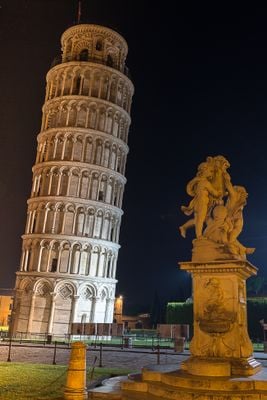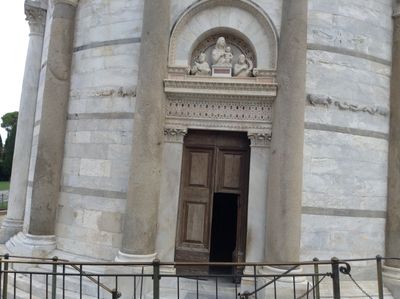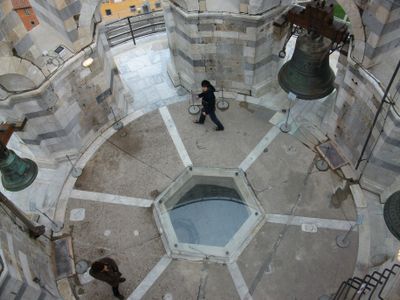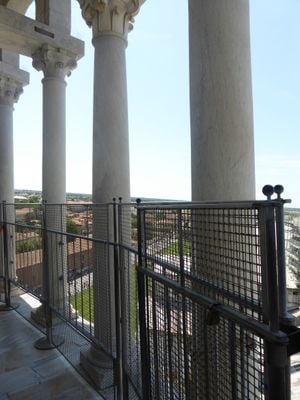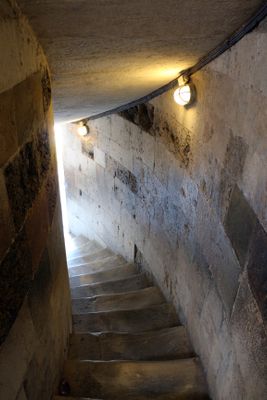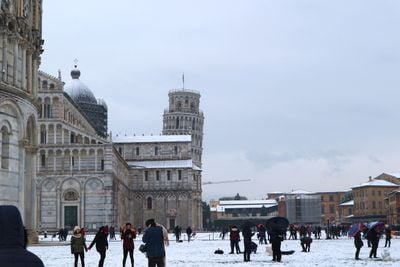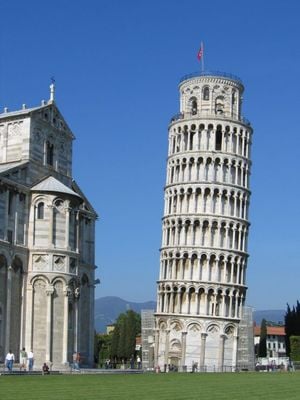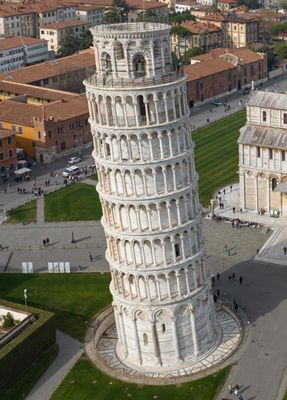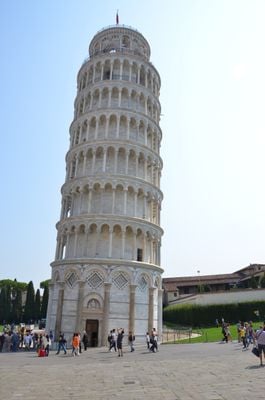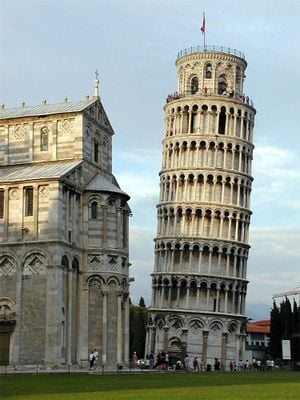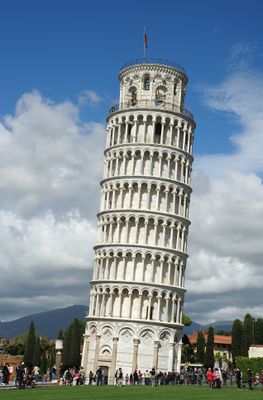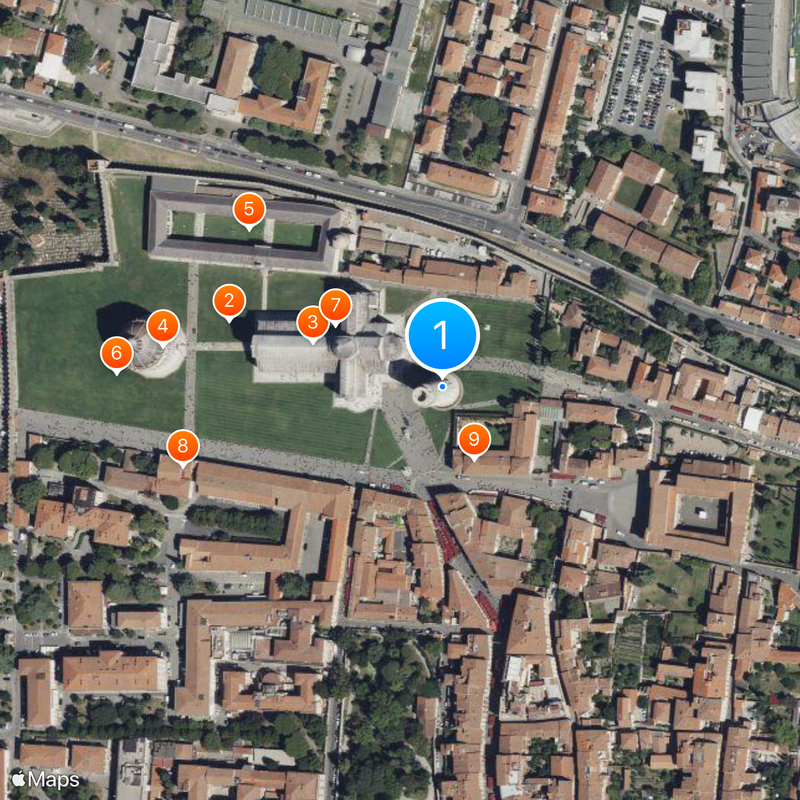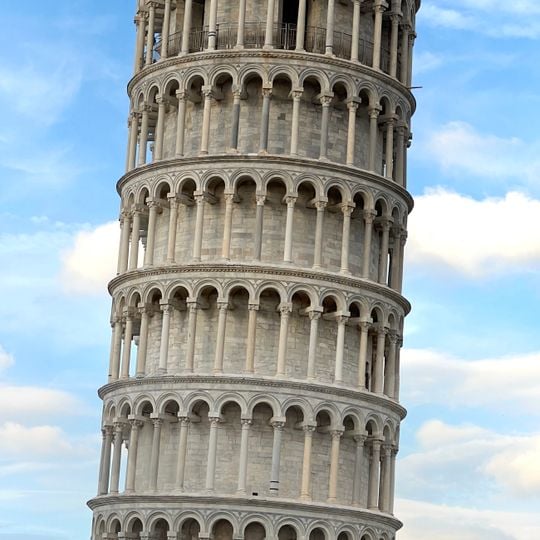
Leaning Tower of Pisa, Bell tower in Piazza dei Miracoli, Italy.
The Leaning Tower of Pisa is a freestanding bell tower on Piazza dei Miracoli in Italy, rising through eight levels of white marble arcades to a height of 183 feet (58 meters). The cylindrical structure displays six exterior galleries with Romanesque columns surrounding a hollow core, and tilts approximately four degrees from vertical due to unstable foundations in soft clay soil.
Construction began in August 1173 under architect Bonanno Pisano during a time of maritime prosperity for Pisa. The tilt developed during work on the third level around 1178 and caused a lengthy interruption, until Giovanni di Simone resumed construction in 1272 and attempted to adjust the upper floors, before Tommaso Pisano finished the bell chamber in 1372.
It functions as the bell tower for the neighboring cathedral and houses seven bells, each tuned to a musical note. On religious holidays and during Mass, the bells still ring and form an audible part of Pisa's spiritual tradition, experienced by residents and visitors alike.
Reaching the top requires climbing 294 steps, with timed entry every 30 minutes to control visitor numbers. Advance booking is recommended, and the ascent takes roughly 30 minutes, while those with limited mobility can explore the ground floor but cannot complete the climb.
Between 1990 and 2001, engineers removed 38 cubic meters of soil from beneath the elevated north side through careful drilling to stabilize the tilt. This intervention reduced the lean by 18 inches (45 centimeters) and stabilized the monument for an estimated 300 years, after it had been worsening by roughly one millimeter annually.
Location: Pisa
Inception: 1173
Architects: Bonanno Pisano, Guglielmo, Diotisalvi
Official opening: 1373
Architectural style: Romanesque architecture
Elevation above the sea: 210 m
Height: 58.36 m
Diameter: 9.522 m
Accessibility: Wheelchair accessible
Fee: Yes
Made from material: marble, stone
Part of: Pisa Cathedral
Address: Piazza del Duomo
Opening Hours: December-January: 10:00-17:00; December 22-January 06: 09:00-19:00; November,February: 09:40-17:40; November 01: 09:00-18:00; March: 09:00-18:00; March 23-29: 10:00-19:00; March 30-31: 09:00-20:00; April-September: 09:00-20:00; June 17-August 31: 08:30-22:00; June 16: 08:30-17:30; October: 09:00-19:00
Phone: +390503872210
Email: info@opapisa.it
Website: https://opapisa.it/en/square-of-miracles/tower
GPS coordinates: 43.72301,10.39662
Latest update: December 12, 2025 16:31

This collection presents significant architectural works from different periods and continents. From medieval cathedrals to contemporary skyscrapers, the selection documents the technical and aesthetic development of building design. The listed buildings were created by influential architects and...

This collection brings together some of the most technically ambitious structures ever built, from record-breaking skyscrapers and suspension bridges to high-speed roller coasters that push the boundaries of what steel and concrete can achieve. These sites span continents and represent decades of...

Piazza del Duomo, Pisa
156 m
Pisa Cathedral
96 m
Baptistry San Giovanni
197 m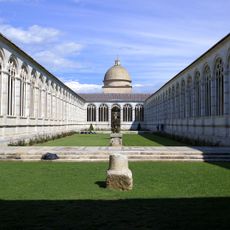
Campo santo
174 m
Pulpit in the Pisa Baptistery
227 m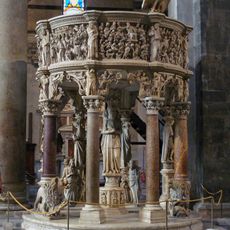
Ambo of the Cathedral of Pisa
86 m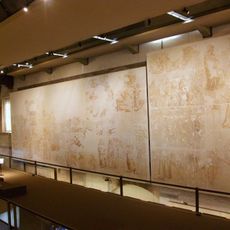
Museo delle Sinopie del Camposanto monumentale
189 m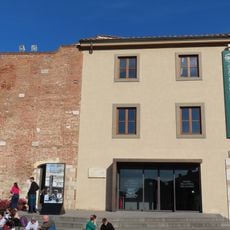
Museo dell'Opera del Duomo
55 m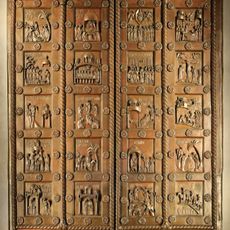
Porta di San Ranieri
50 m
Santa Chiara
159 m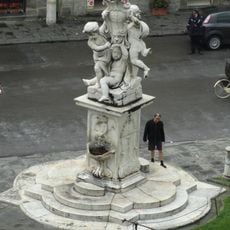
Putti fountain
61 m
Tower of Santa Maria
279 m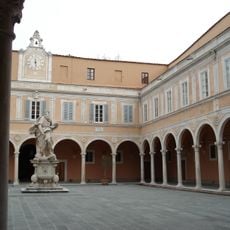
Archbishop's Palace
188 m
Organi del duomo di Pisa
63 m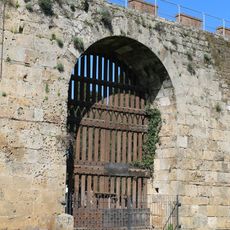
Porta del Leone
246 m
Cappella Aulla
188 m
Torre del Leone
251 m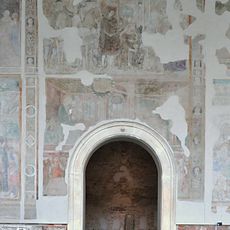
Cappella Ammannati
228 m
San Giorgio ai Tedeschi
144 m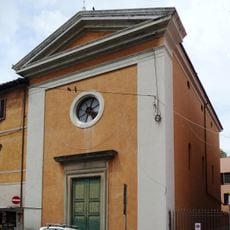
San Ranierino
153 m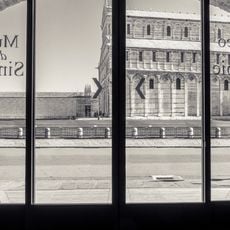
Sinopie Museum
145 m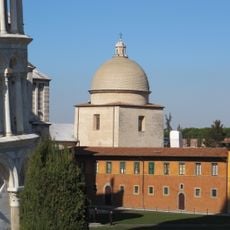
Cappella Dal Pozzo
123 m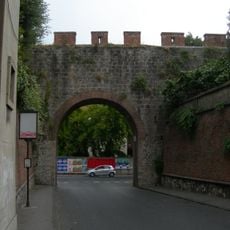
Porta San Ranierino
154 m
Palazzo dell'Opera della Primaziale Pisana
81 m
Ospedale dei Trovatelli
113 m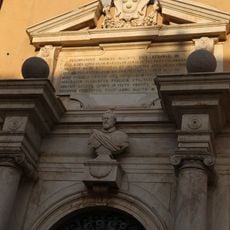
Palazzo del Collegio Ferdinando
175 m
Capitoline she-wolf
53 m
Mosè
199 mReal people, real opinions — but not verified.
Visited this place? Tap the stars to rate it and share your experience / photos with the community! Try now! You can cancel it anytime.
Incredible to see in person! The tower really leans a lot, it’s impressive. The place is very touristy but definitely worth the visit. Nice vibe in the square and a great spot for photos!
A must!
Discover hidden gems everywhere you go!
From secret cafés to breathtaking viewpoints, skip the crowded tourist spots and find places that match your style. Our app makes it easy with voice search, smart filtering, route optimization, and insider tips from travelers worldwide. Download now for the complete mobile experience.

A unique approach to discovering new places❞
— Le Figaro
All the places worth exploring❞
— France Info
A tailor-made excursion in just a few clicks❞
— 20 Minutes

